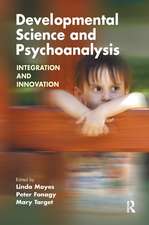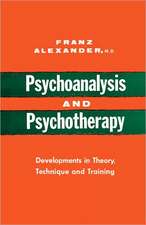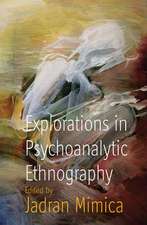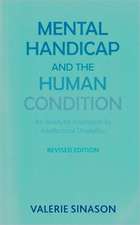Contacting the Autistic Child: Five successful early psychoanalytic interventions
Autor Jorge Ahumada, Luisa C. Busch de Ahumadaen Limba Engleză Paperback – 28 feb 2017
Preț: 377.18 lei
Preț vechi: 397.04 lei
-5% Nou
72.18€ • 77.18$ • 60.18£
Carte tipărită la comandă
Livrare economică 17 aprilie-01 mai
Specificații
ISBN-10: 1138211672
Pagini: 200
Ilustrații: 6 Illustrations, black and white
Dimensiuni: 156 x 234 x 12 mm
Greutate: 0.32 kg
Ediția:1
Editura: Taylor & Francis
Colecția Routledge
Locul publicării:Oxford, United Kingdom
Public țintă
Postgraduate, Professional, and Professional Practice & DevelopmentCuprins
Foreword
Introduction: The expanding frontiers of autistic spectrum disorders
Ch. 1: Autism: a historical approach
Ch. 2: Contacting a 19-month-old mute autistic girl: Lila
Ch. 3: Treating encapsulated autism soon after trauma: Axel
Ch. 4: From mimesis to agency: clinical steps in Sophia’s work of psychic two-ness.
Ch. 5: Autistic mimesis in the Age of Media: Juan, a screen-bred animal-child
Ch. 6: Clinical notes on a case of transvestism in an autistic child: Jaime
Ch. 7: Conceptual remarks on early mind
Ch. 8: A roaming view of the Autistoid Age
Addendum 1: Bion’s theory of thinking and autistic-mimetic dynamics: a dialogue with Antonino Ferro
Addendum 2: On Tustin’s Revised Edition, a response to Angela Joyce, and an excursus on Ogden's autistic-contiguous position
Notă biografică
Jorge L. Ahumada is a training analyst at the Argentine Psychoanalytic Association and a Distinguished Fellow of the British Psychoanalytical Society. He was editor for Latin America of the International Journal of Psychoanalysis from 1993 to 1998, and received the Mary S. Sigourney Award in New York in 1996. He was "Meet the Analyst" Speaker at the International Psychoanalytic Association Prague Congress, 2013.
Descriere
Amid long-standing controversy on their causes, which most regard as neurological, and despite their increasing social impact, there has been scant progress in the therapy of the autistic spectrum disorders. Currently fashionable attempts at treatment through behavioural-cognitive focal approaches do not seek resolution, only re-education and rehabilitation. Contacting the Autistic Child explores the clinical process in the early psychoanalytic treatment of autistic children.
Organised around five detailed clinical case studies, and drawing on the ideas of major clinicians in child analysis such as Tustin, Winnicott and Alvarez, this book sets out a clear programme for working with and understanding autistic children in a psychoanalytic setting, with a particular focus on issues of clinical technique but also conceptual matters. Working on the notion that autistic disorders come to be - as Winnicott and Tustin saw it - from an early rupture of the affective communication between baby and mother, this book aims at reinstating such communication in the child-analyst interaction. By way of detailed description of what goes on in the analytic link, the authors strive to make the reader share in what goes on in the clinical setting, evincing how, though at times excruciatingly hard on the therapist, resolution is attainable.
Once the "primal dialogue" - to use Rene Spitz's terms - is reinstated in a stable way in session, it flows by itself into the family ambience. The clinical accounts of this book make the argument that psychoanalysis, carried along Tustin's technical lines, and subject to the proviso that treatment starts early, preferably in the first three years of life, is the treatment of choice for autistic spectrum disorders. The strong methodological narrative is important and notable in light of the doubts, criticism and uncertainty that have surrounded the psychoanalytic treatment of autism.
This novel, highly detailed narrative of five successful early treatments aims to help dispel the pessimism pervading the field and help to redress the lives of many more children. Contacting the Autistic Child will appeal to psychoanalysts and psychoanalytic psychotherapists endeavouring to obtain results in a major area lacking resolutive approaches.

























